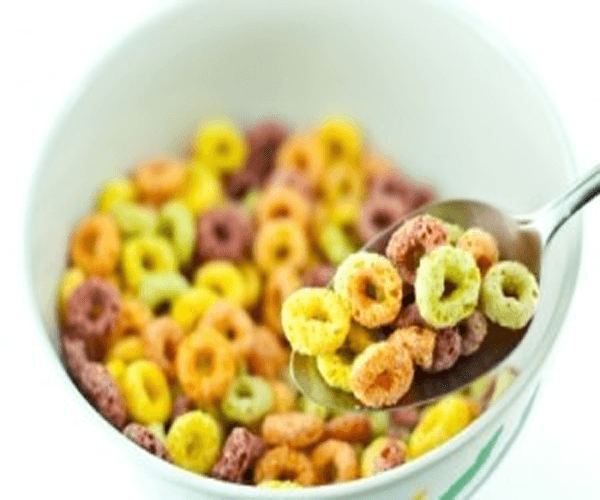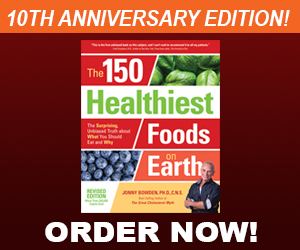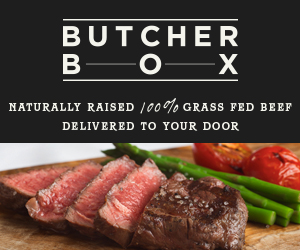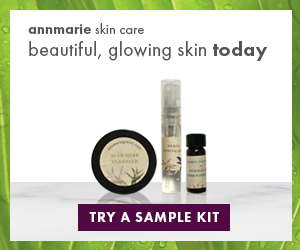By Jonny Bowden, PhD, CNS aka “The Nutrition Myth Buster”™
Imagine you’re about to eat a bowl of typical American breakfast cereal. You cover it with some milk and it’s all crunchy. About 3 minutes later, it is a soggy mess. That soggy mess – cereal manufacturers have been trying to fix for years but can’t do – is a clue to why cereal is one of the worst foods on the planet.
Around the turn of the last century, people ate a lot of cereal. Cereal wasn’t out of a box. Ready-to-eat cereal hadn’t been invented yet, so people ate grains that had to be combined with water or milk, cooked slowly over the stove for a long time. They also ate a lot of high-protein foods for breakfast like bacon, eggs and ham.

Into this milieu came a really interesting character named John Harvey Kellogg. Kellogg was a surgeon. He lived in Battle Creek, Michigan; he ran a sanitarium, the Battle Creek Sanitarium. As a vegetarian and a devout Seventh-Day Adventist, he had some really interesting ideas about food.
Kellogg, well-motivated as well as sincere, wanted to find a healthier low-fat, high-fiber way for his patients to start the day, and he wanted it to be something that he could send to them by mail when they left the sanitarium. Ideally, something that didn’t need to be cooked. Kellogg and his wife, make something called granula, which later was renamed to granola. They wanted to make those grain pieces flatter to get the texture better, to make it more like a flake instead of the granula rock.
Experimenting, they boiled the wheat. They found it turns into a mush. They run this mush through a roller; they discover the wheat was sticking onto the roller like a flattened flake. The beginnings of flakes! Around this time, a whole new system of warehousing and centralized production was emerging. This meant that to make it in the marketplace, the product had to be able to survive for several months. This was not good news.
Real corn flakes start to develop a foul odor after about a month because the oil in the germ portion of the corn starts to turn rancid. With the new production system, it could had been up to nine months between the production time and the actual consumption. They had to change the formula. They took out the problematic corn germ as well as the bran; and used only the starchy center. Everything that had anything good was removed; they probably didn’t even know how bad this was yet because vitamins hadn’t even been identified in food yet!
They were faced with a new technology emerging called gun puffing; puffed wheat and puffed rice? It started back in 1904. They actually took army surplus cannons; they filled them with white rice and then applied super high heat. The cannons became scalding hot, lots of pressure in the chambers. When they opened the chambers, boom, there was a rapid drop in pressure, the rice exploded into puffed rice. The problem was that this wasn’t that efficient. Soon, the gun puffers were a thing of the past and in came the extrusion machines.
Here’s how your healthy cereal (this includes just about everything you didn’t make on your own stove) is made The extrusion machine takes the ingredients, mixes them together at warp speed, it forms a resultant kind of goo into any of fun-filled shaped you want, letters of the alphabet, little animals, and so many more. It originally took them about 7 hours to cook and process grains; with extrusion machines, the time was reduced to 20 minutes.
According to the excellent book, “Pandora’s Lunch Box”, which is really the best book I’ve ever read about the food processing industry, extrusion is: “Undoubtedly, the harshest and most nutritionally devastating way to process cereal.”
Beyond the extruding machines, there is steam cooking under pressure, drying, and toasting, which occurs at fiery 525 to 625 degree temperature – that’s because they need to evaporate every drop of water in order to give the remaining dreck as long a shelf life as possible. Most commercial cereals are literally immune to decomposition. There’s nothing in it that’s alive.
Here’s the final irony. What do you think this stuff tastes like after this entire process? It tastes like the box it comes in. Seriously! The only think they can do to make it edible and have people actually eat it, is to use durable manufactured flavorings. There’s no such thing as a natural flavoring. This stuff is all manufactured in factories in New Jersey. They use artificial flavorings and artificial coloring because the original stuff is a disgusting gray. Then, because there’s absolutely nothing of any value in this mess, they fortify it with synthetic vitamins, mostly made in China, so they can tell you on the box how this is a healthy cereal that contains 100% of your vitamin needs.
While I’m sure that somebody’s going to write to me and tell me about some beautiful cereal, fat-free, up in New Hampshire, and they grow everything by hand and they package everything by hand. I’m sure there’s an exception somewhere to every rule, but if that wonderful cereal from New Hampshire wound up in a box and it was shipped anywhere where you can buy it, chances are even it was subjected to at least some of the techniques that they have to subject this stuff to in order to be able to put it in a box, ship it, and sell it. That’s why I say, in my opinion, that commercial processed cereal is one of the worst foods ever.
This is Dr. Jonny, busting the low-fat diet one myth at a time.
By Jonny Bowden, PhD, CNS aka “The Nutrition Myth Buster”™








Leave A Comment